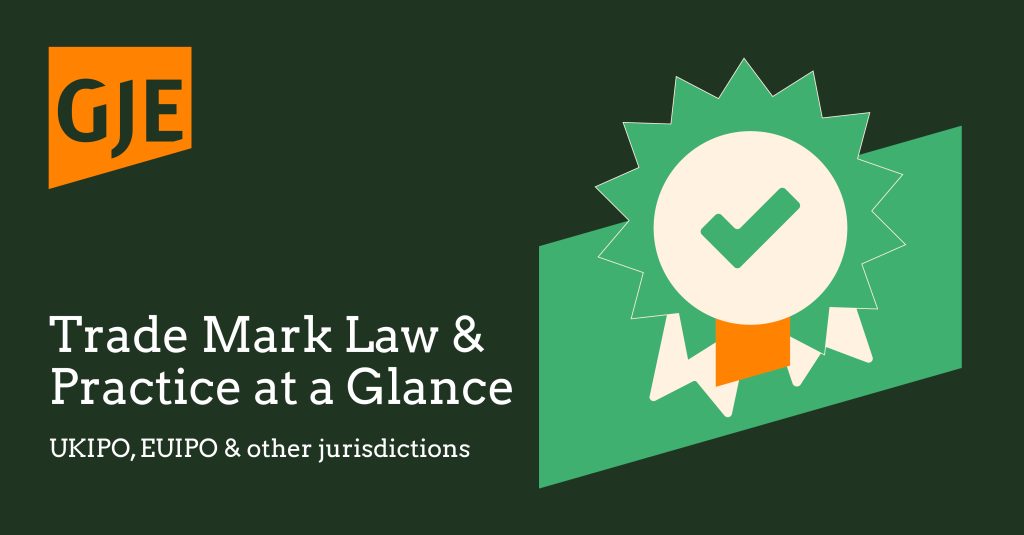
Brand owners continue to face the challenge posed by look-alikes. The difficulty for brand owners is that whilst it may be clear where the inspiration for a particular third-party product has come from, often that product is not quite close enough to the original for there to be infringement.
The long-running litigation between Iconix Luxembourg Holdings SARL (aka “Umbro”) and Dream Pairs Europe Inc. (“Dream Pairs”) is one such saga that has seen a win for each party before the Supreme Court eventually found in favour of Dream Pairs and which seemingly strikes a blow to brand owners. However, now that the dust has settled, a closer reading of the decision reveals that the opposite may be true and we explore how brand owners may adapt their strategy accordingly.
The court decisions
Having successfully defended an infringement claim at the Intellectual Property Enterprise Court (IPEC), Dream Pairs saw that decision overturned by the Court of Appeal who decided that they had infringed the earlier trade mark registration of Umbro.
The Court of Appeal found that Dream Pairs’ use of their sign in 2018 on various footwear including football boots and trainers infringed the Umbro trade mark, which is registered for footwear, among other items.

To get to that decision the Court of Appeal conducted afresh the multi-factorial assessment of the similarity of the marks and the likelihood of confusion. Dream Pairs use of the sign was found to be similar to Umbro’s trade marks, particularly when viewed from different angles which emphasised the similarity:

The Court of Appeal concluded that the IPEC judge should have looked beyond a side-by-side comparison and considered the post-sale context where a consumer would view the sign from different angles and in particular from above, i.e. seeing the sign on a football boot being worn at a game, by a viewer standing nearby and looking down at the wearer’s feet.
This analysis led the Court of Appeal to conclude that that there was “a moderately high level of similarity” between the marks and hence infringement.
Dream Pairs appealed the decision to the Supreme Court. There were two specific aspects of the appeal:
- Whether post-sale circumstances can be taken into account when assessing the degree of similarity of marks, which the court referred to as “the Similarity issue”; and
- Whether post-sale confusion is a self-standing basis for infringement, which the court referred to as “the Confusion issue”.
Ultimately, the Supreme court found that the Court of Appeal had exceeded its remit by conducting a fresh assessment of the Similarity issue and the Confusion issue. The Court of Appeal was not entitled to substitute that assessment for that of the IPEC. Therefore, Dream Pairs’ appeal was upheld.
This would seem to work against brand owners but from a close review of the Supreme Court’s analysis of the Similarity issue and the Confusion issue in more detail, brand owners will identify opportunities to improve their chances of success. These issues are addressed below.
Future strategy for brand owners
The Similarity issue and the Confusion issue should be considered by brand owners as part of their filing and enforcement strategies.
On the Similarity issue, the Supreme Court confirmed that post-sale circumstances can be taken into account when assessing similarity to establish, rather than to rule out, similarity between the signs.
This raises a couple of issues for brand owners to consider. The first is the filing strategy and also the scope of freedom to operate searching, particularly for device marks. The second is how to take advantage of the flexibility that a court can adopt when reviewing the evidence that compares marks.
Filing strategy: It is still possible to file series of marks at the UKIPO and so it may be possible to obtain registered protection in respect of up to 6 different representations of the same mark in a single filing. This is provided that they resemble each other as to their material particulars and differ only as to matters of a non-distinctive character not substantially affecting the identity of the trade mark. Such a registration may provide a stronger basis to challenge a copycat.
Eventually, series marks will no longer be available at the UKIPO but in any case brand owners may also consider filing additional versions of the same mark viewed at different angles via separate applications. Multiple registrations would provide brand owners with additional bases for contesting a copycat’s use. That said, care should be taken because filings of this nature may amount to “legal weapons” and which would be vulnerable to invalidation following the Lidl v Tesco case.
Freedom to operate search strategy: All brand owners should also consider the implications of the Umbro v Dream Pairs case when it comes to selecting new device marks. Therefore, when reviewing freedom to operate search results, brand owners must pay careful attention to how earlier marks may be viewed at different angles, taking in to account the shapes included within the mark and also the goods involved and how they are seen/used by consumers. This may reveal problematic earlier rights that could influence whether or not to proceed with the proposed mark.
Enforcement – flexible evidence: With the appropriate registered trade mark protection in place, the Supreme Court decision seems to permit brand owners to focus on those circumstances of the alleged infringer’s use in which the marks bear the closest resemblance.
On the Confusion issue, the Supreme Court confirmed that use of a sign constitutes infringement where it gives rise to post-sale confusion, rather than only at the point of sale. Actual confusion, damage or advantage to the defendant are not required.
This raises a further consideration for brand owners, and defendants.
Enforcement – demonstrating confusion: Brand owners should document all aspects of the alleged infringing use as they are not restricted to a straightforward comparison of the marks and goods and services based on the papers. If confusion (or a risk of confusion) occurs at any point, it can result in a finding of infringement and may override any argument based on the presence of a particular consumer purchase and sales process.
Defendants will note that post-sale confusion can amount to infringement and so disclaimers at the point of sale are unlikely to provide protection.
Best foot forward
The fact that Dream Pairs’ appeal against the finding of infringement was successful is a reminder of the role of the appeal court and the high bar to succeed in an appeal where the initial findings must either be rationally insupportable, or the judge must have erred in law or principle. Therefore, it is imperative to present the strongest possible case at first instance.
We regularly assist clients in devising and implementing robust trade mark filing strategies. Get in touch with us to discuss your options at gje@gje.com


